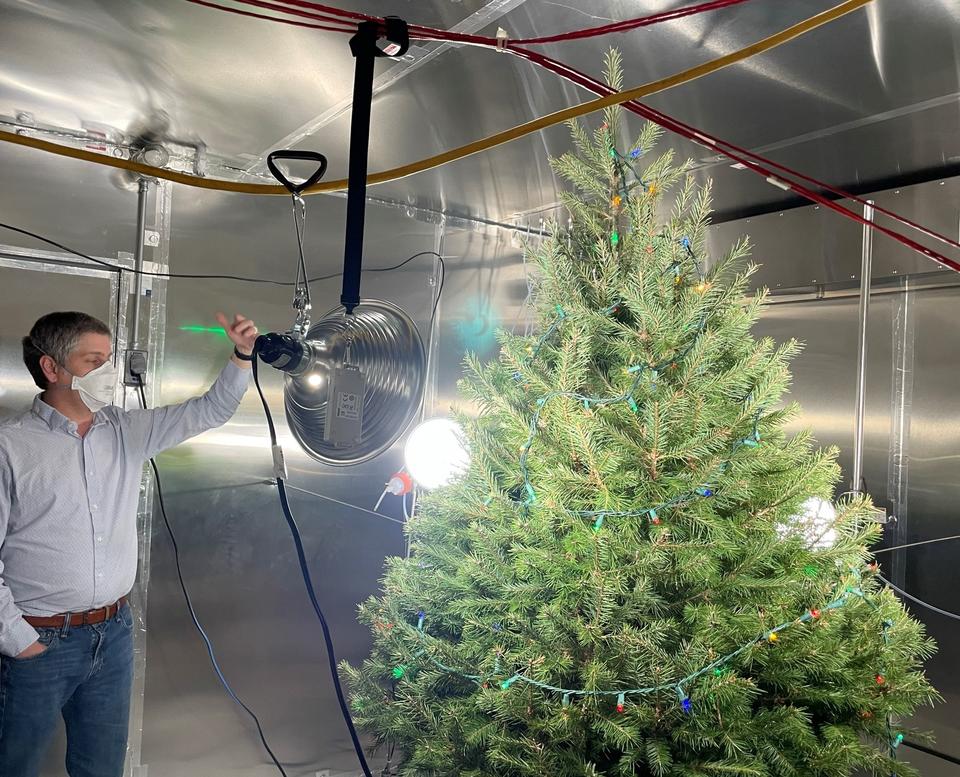
NIST researchers placed a common type of Christmas tree in a sealed chamber for 17 days to monitor and measure the chemicals it emits. These chemicals, called volatile organic compounds (VOCs), give that pine smell and can react with ozone to form byproducts. The researchers found low amounts of these chemicals, which may be a potential concern for people who are sensitive to them.
M. King/NIST
Every holiday season, Americans buy nearly 30 million live Christmas trees. Many families enjoy not only having a live tree inside their homes but also smelling the fresh fragrance it creates. That smell comes from chemicals called volatile organic compounds (VOCs). However, little is known about how much is emitted and whether they have any health impacts.
"Our nose is a good chemical sensor," said Dustin Poppendieck, an environmental engineer at the National Institute of Standards and Technology (NIST). "We know that these trees are emitting something, and the question then becomes: How big of a source is it? We wanted to explore which chemicals are emitted and how much, and to put that into the context of other sources of chemicals in a house," he said.
To answer these questions, Poppendieck and his NIST colleagues took a common type of Christmas tree - a Douglas fir- and sealed it inside a chamber. They then measured the amount and type of VOCs it emitted over 17 days. They also investigated whether the VOCs reacted with other components of indoor air to create new compounds.
The team's findings have been published in the journal Indoor Environments.
The fresh smell that is commonly associated with Christmas trees comes from a group of VOCs called monoterpenes, which are also found in air fresheners, candles and some personal care products. In the outdoors, conifers, the group of plants that includes most Christmas trees, release monoterpenes, and they can affect outdoor air quality. But little is known about how much monoterpene is released when a tree is cut down and placed indoors.
">






